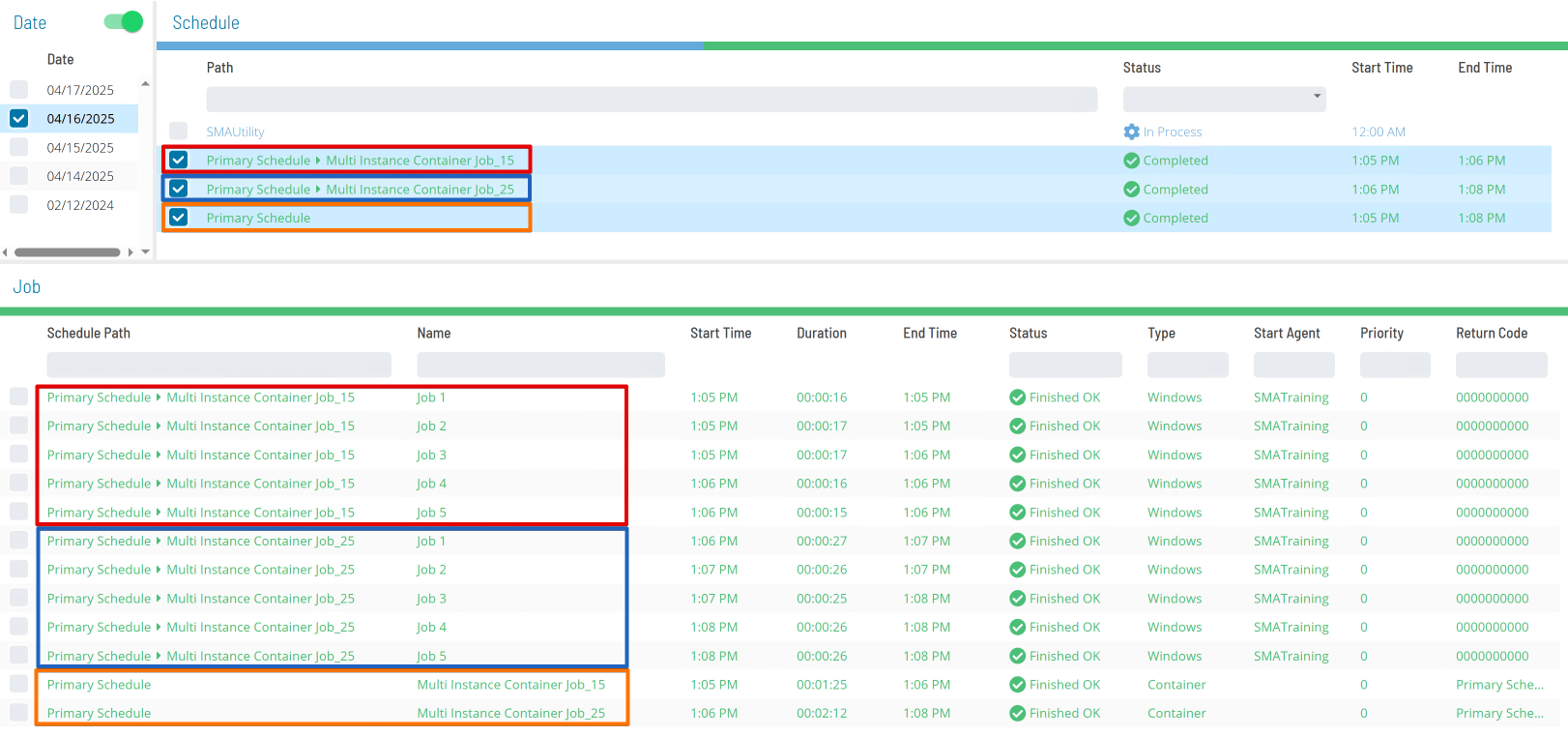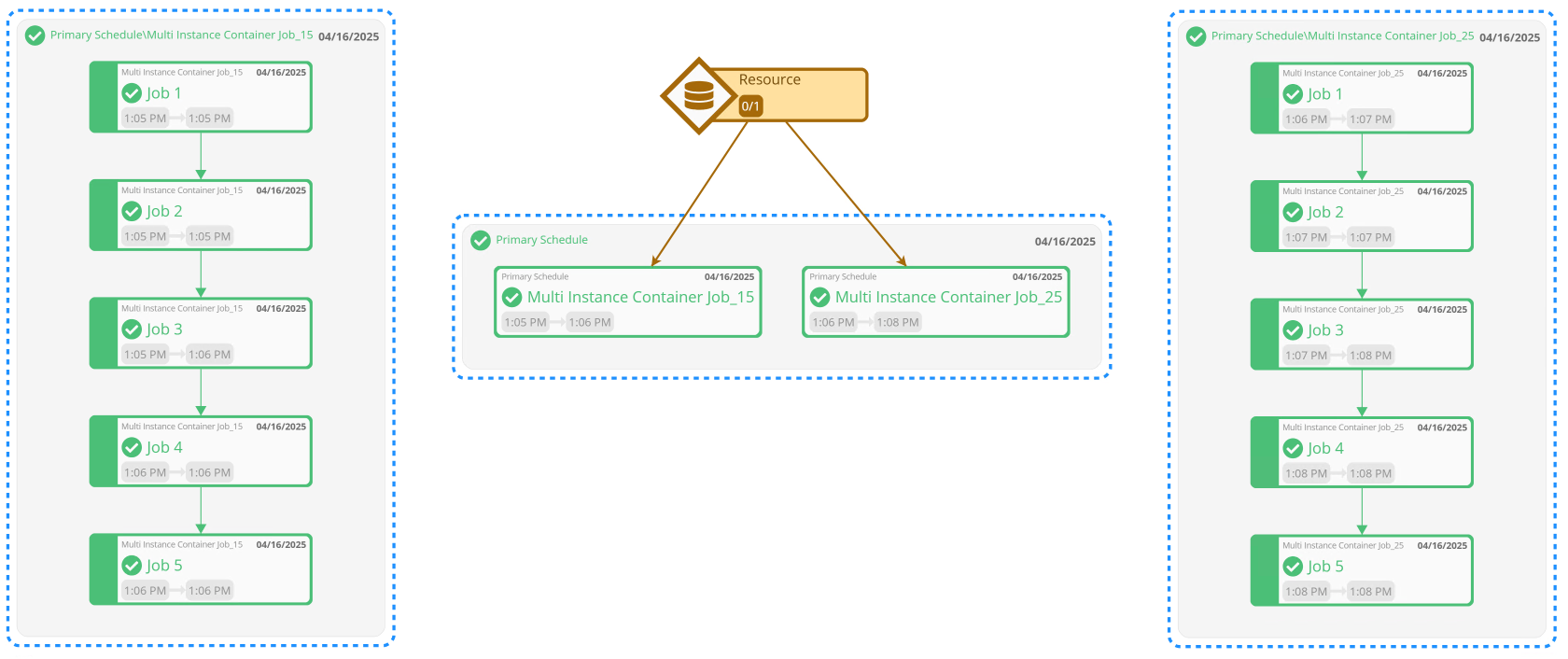Multi Instance Exercise 10
Exercise 10: Multiple SubSchedules
Objective
To utilize Job Instance Properties to build 2 SubSchedules.
Summary
Create a Schedule, Primary Schedule, with a multi instance Container, Multi-Instance Container Job, that will create 2 subschedules with different TIME Properties, 15 and 20, that propagate down to the SubSchedule, SS SubSchedule, as SIs, SI.TIME.
Instructions
Create the Resource
- Create a Resource with Max Value of
1.
Create the SubSchedule and Jobs
- Create a SubSchedule named SS SubSchedule.
- Within SS Subschedule, create 5 Jobs running in dependent order with the following Command Line:
timeout /t [[SI.TIME]]
- Job 1 → Job 2 → Job 3 → Job 4 → Job 5
Create the Primary Schedule
- Create a Schedule named Primary Schedule.
- Give it a Schedule Instance Property of:
ENV=Production
Create the Multi Instance Container Job
- Within Primary Schedule, create a container job called, Multi-Instance Container Job:
- Assign the Container Job to SS SubSchedule
- Mark it as Multi-Instance
- Give the Container Job a Frequency of Mon-Fri-N
- Create two Job Instance Properties
TIME=15TIME=25
- Define a Resource Dependency equal to
1.
Build the Schedule
- Build the Primary Schedule.
note
- You should be able to see the following in an Operations window:
- Two Container Jobs, each containing SUBSCHEDULE were built
- Take note of the fully qualified SubSchedule Names
- Verify that only one Container Job runs at a time


Enterprise Manager
Details
- Create a Schedule named PRIMARY SCHEDULE.
- Give it a Schedule Instance Property of:
ENV=PRODUCTION
- Give it a Schedule Instance Property of:
- Create a SubSchedule named SUBSCHEDULE.
- Do NOT give it a Schedule Instance Property
- Within SUBSCHEDULE, create 5 Jobs running in dependent order with the following Command Line:
Timeout /t [[SI.TIME]] - Within PRIMARY SCHEDULE, create a Multi-Instance Container Job:
- Assign the Container Job to SUBSCHEDULE
- Mark it as Multi-Instance
- Give the Container Job a Mon-Fri-N Frequency
- Create two Job Instance Properties
TIME=15TIME=25
- Create a Resource with a Max Value of
1. - Give the Container Job a Resource Dependency with Resource =
1. - Build the Schedule.
- Verify the following in an Operations window:
- Two Container Jobs, each containing SUBSCHEDULE were built
- Take note of the fully qualified SubSchedule Names
- Verify that only one Container Job runs at a time